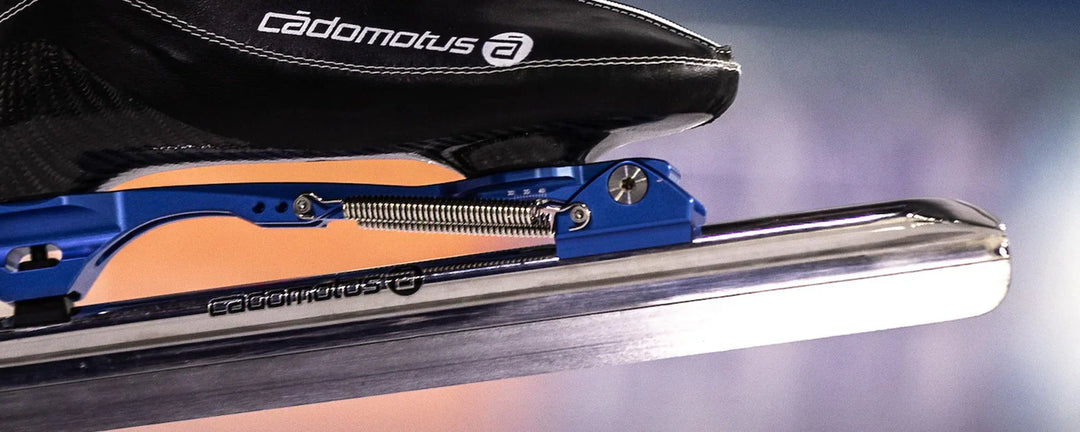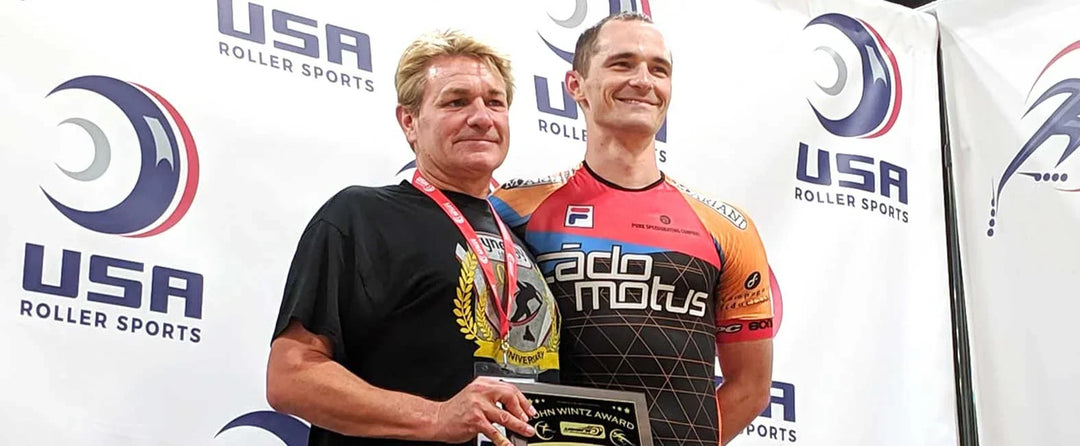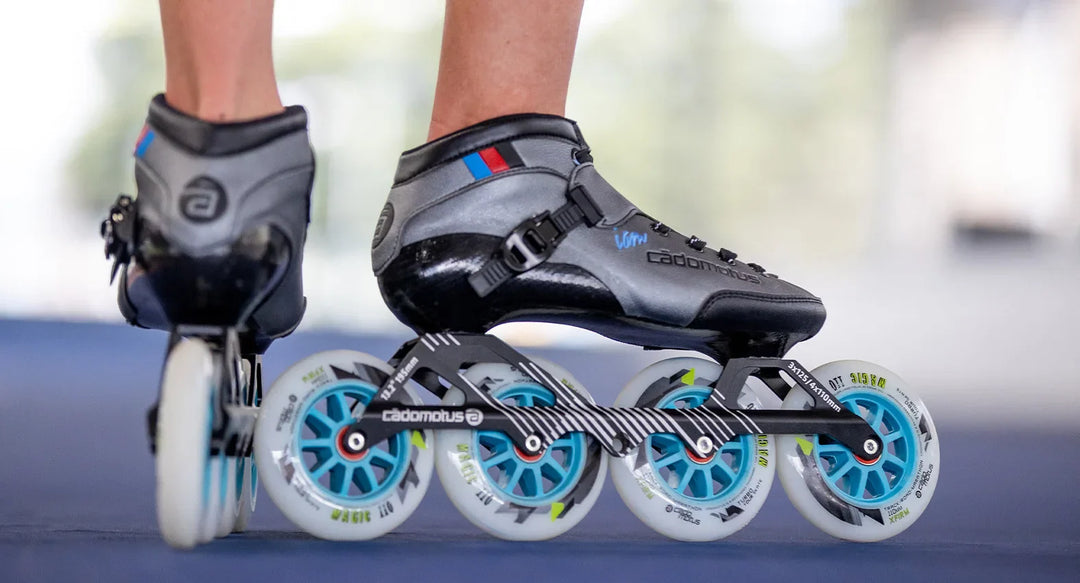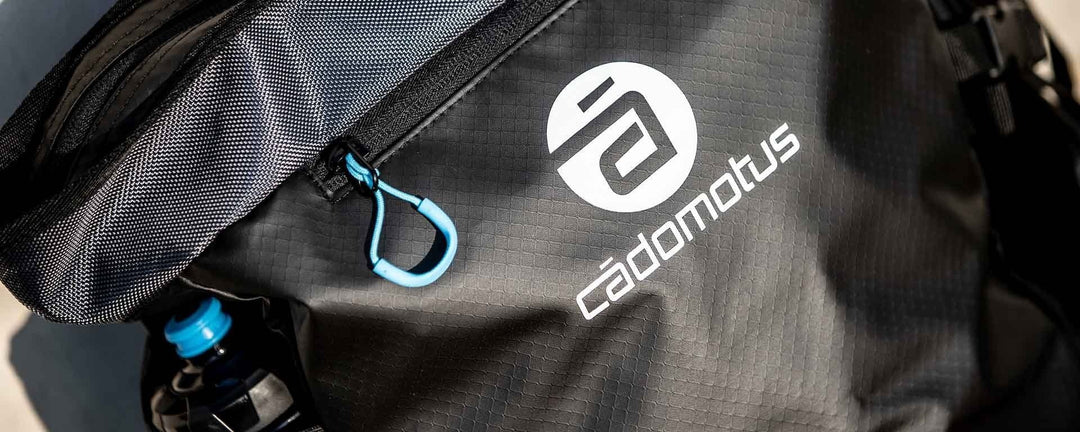The main differences between a road cycling shoe and a triathlon cycling shoe
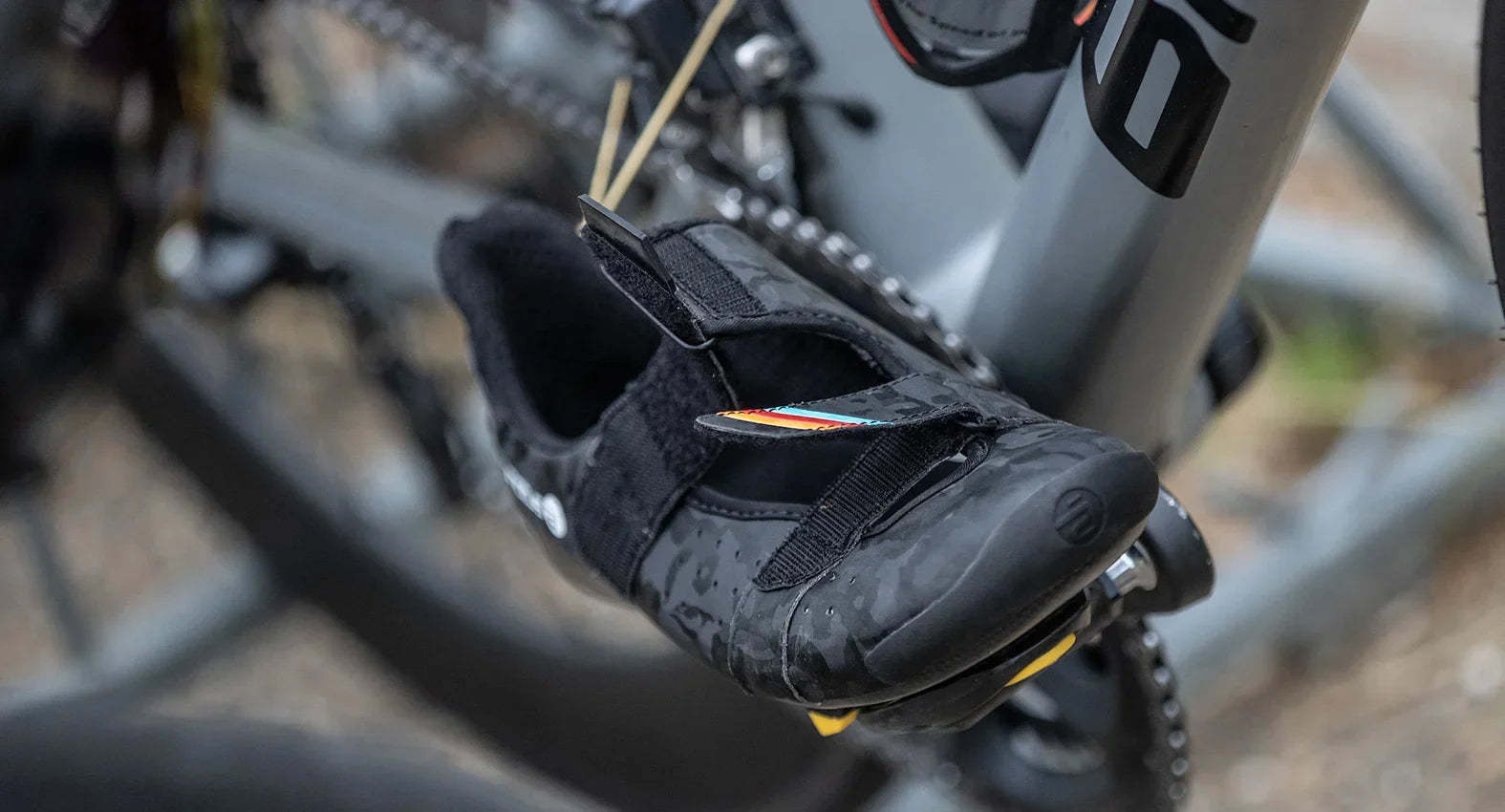
Optimal energy transfer with minimal power loss and comfort: that's what you want from a road bike. And this applies equally to a cycling race or a triathlon event. And yet, the differences between cycling and triathlon shoes are generally significant. Read this article to learn more.
Let's start with a spoiler: the Chronos Aero Triathlon shoe from Cadomotus, designed specifically for triathlon, is also suitable for everyday use. It has a few differences and also offers several advantages over classic quick transition triathlon shoes, but we'll come back to that later. First of all, here are the differences between classic road cycling shoes and triathlon cycling shoes.
Road Cycling and triathlon cycling shoes
A cycling shoe is, logically, designed to do one thing in particular: optimizing your cycling performance. Such a shoe is developed to offer minimal energy waste as well as maximum comfort, most high-performance shoes are built on a carbon sole. Indeed, if you spend many hours on your bike, you don't want your performance to be hampered by foot pain.

Compared to a triathlon cycling shoe, a road cycling shoe is relatively simple. The shape and design of a triathlon shoe, on the other hand, are largely determined by the conditions and needs of the sport. To transition quickly, pedal with wet feet and no socks, and then run after cycling, you need the right shoe. Here are the main differences:
- All triathlon cycling shoes, you put them on with wet feet. This can be very unpleasant, since during the swim, your skin soaks up some water (osmosis), your blood vessels contract and your feet get slightly smaller. Wrinkles also form. The chance of blisters is high if you immediately put a lot of pressure on your pedals while your wet feet slide in your shoes. Ventilation is then incredibly important to get your feet dry as quickly as possible. You absolutely need an open shoe for this reason.
- Too slow a transition from swimming to cycling can easily cost you your spot at the head of the race. The closure system of a triathlon shoe is much simpler than that of a cycling shoe, even if, on standard models, it comes at the expense of foot support. In a cycling race, you can take your time to put on your shoes and adjust them optimally to your feet, whereas in a triathlon, every second counts.
- To speed up your transitions, triathlon cycling shoes usually have a loop at the heel. Pre-clip the shoes onto the pedals, pass rubber bands through the heel loops, and attach them to the bike. Pre-set them in a horizontal position, your setup is ready for a quick flying mount.
- Aero overshoes are virtually not used in triathlon because they take too long to put on – even though, from an aerodynamic standpoint, they do make a difference on long distances.
Some of these differences are erased with the Cadomotus shoes: for example, both the World Cup T2 and the Chronos Aero have fast and easy tightening systems. Moreover, the Worldcup, made for sprints, stands out for its excellent ventilation, while the Chronos, more long-distance oriented, provides exceptional aerodynamics – combined with a clever venting-hole design hidden in the carbon sole.

The Cadomotus shoe as a revolutionary solution
This is where the comparison with the standard triathlon shoe ends. A major selling point in Cadomotus' shoes are their stiff, raised edges. That shell-sole is already so firm and snug, that even without having yet fastened your shoes after the transition, your power transfer is already almost optimal. The raised edges lock up your foot considerably better than a shoe with flexible upper and heel box. Even without tightening your shoes, you can efficiently transfer your power to your pedals and go full out on your bike without having to deal with awkward closure mishaps.
Our unique know-how from ice and inline skating about heat-moldable carbon shoes, combined with our original process in collaboration with athletes and scientists, allowed Cadomotus to create an innovative shoe collection. With such a perfect-fitting carbon shell-sole, your heel bone is stabilized and your calf is relieved during cycling, and you can save your energy to run faster in the last stage!
The Chronos shoe also solves the age-old problem of aerodynamics and the inconvenience of putting on aero overshoes for long distances. A handy zippered upper cover, already popular in skating, provides you with 10 watts less resistance thanks to greater aerodynamics.

Conclusion
In short, Cadomotus succeeds in overcoming the main differences between cycling and triathlon shoes, and does it in groundbreaking ways. With their unique carbon shell-soles, Cadomotus' carbon cycling shoes are stiffer and offer better power transfer than standard road cycling shoes, with hardly any power loss! As for the Chronos, the shoe offers enough comfort for the 4 to 5 hours of cycling of a triathlon, and has exceptional aerodynamics thanks to its built-in upper cover; it also helps relieve your calves, which in turn makes for a better run. A good number of top triathletes are already so satisfied with the Cadomotus carbon-shell shoes that they use them daily and no longer need separate cycling shoes.
Want to know more?
Read about the development of these shoes in collaboration with top triathletes and motion scientists here.
